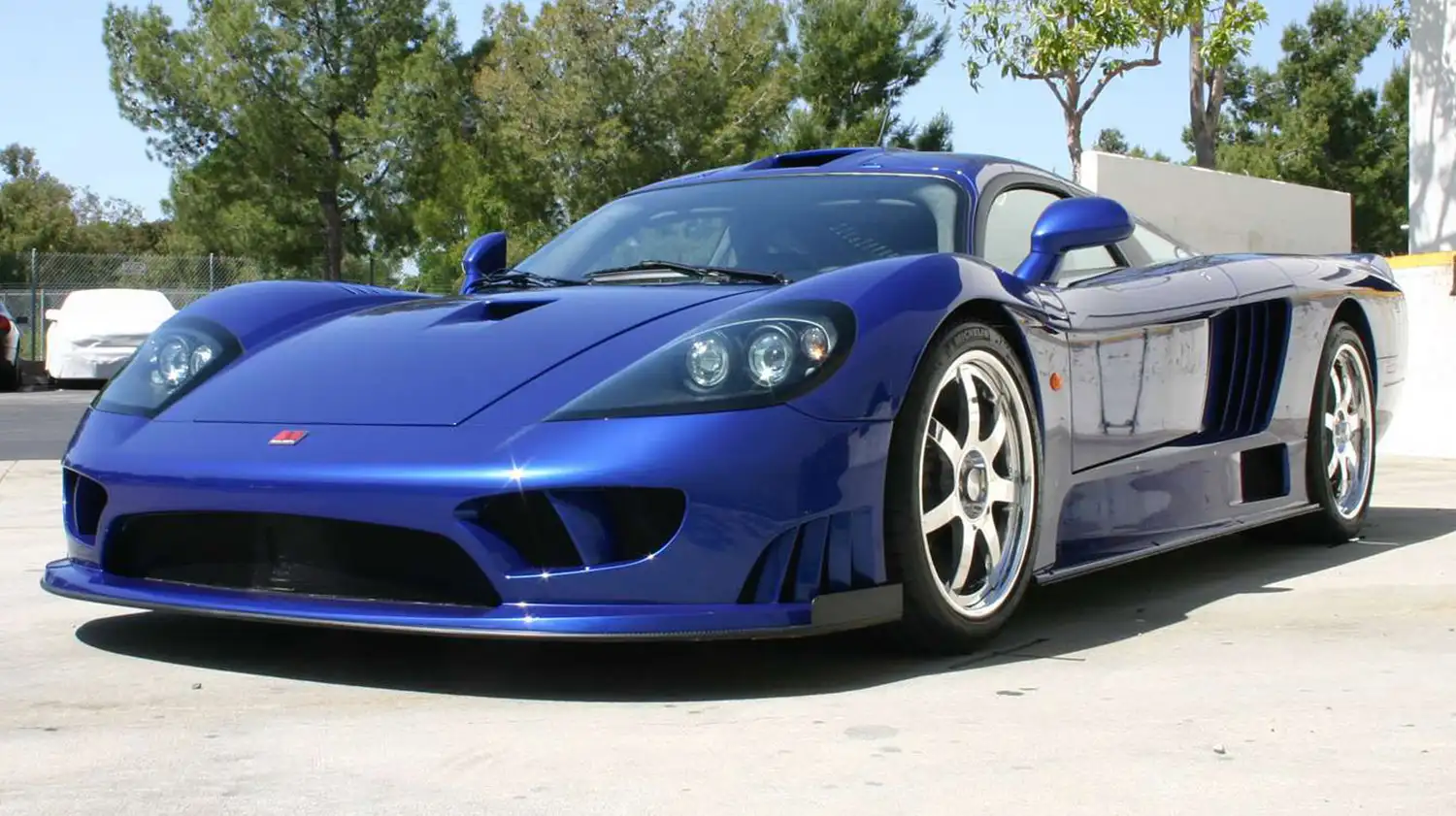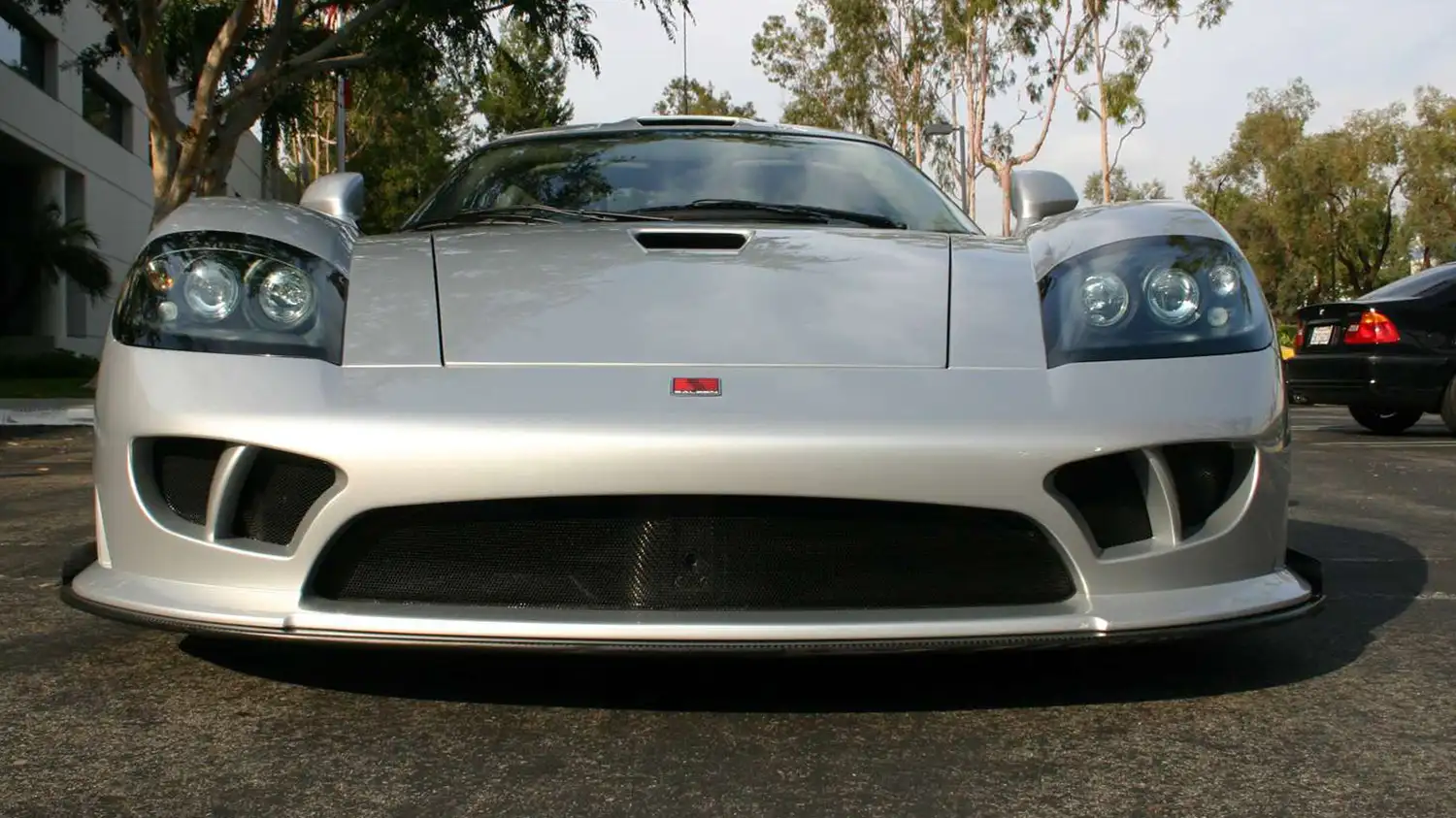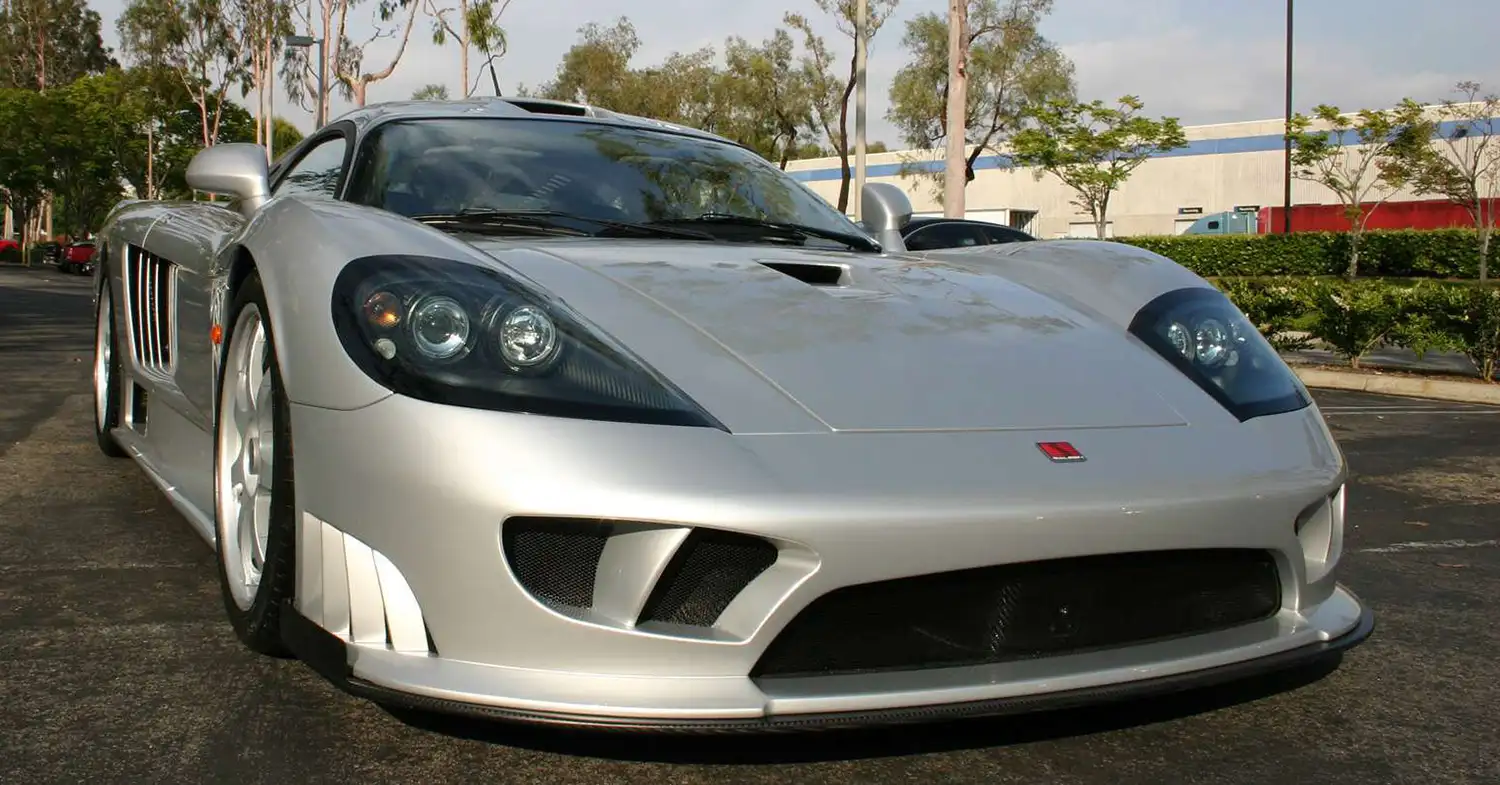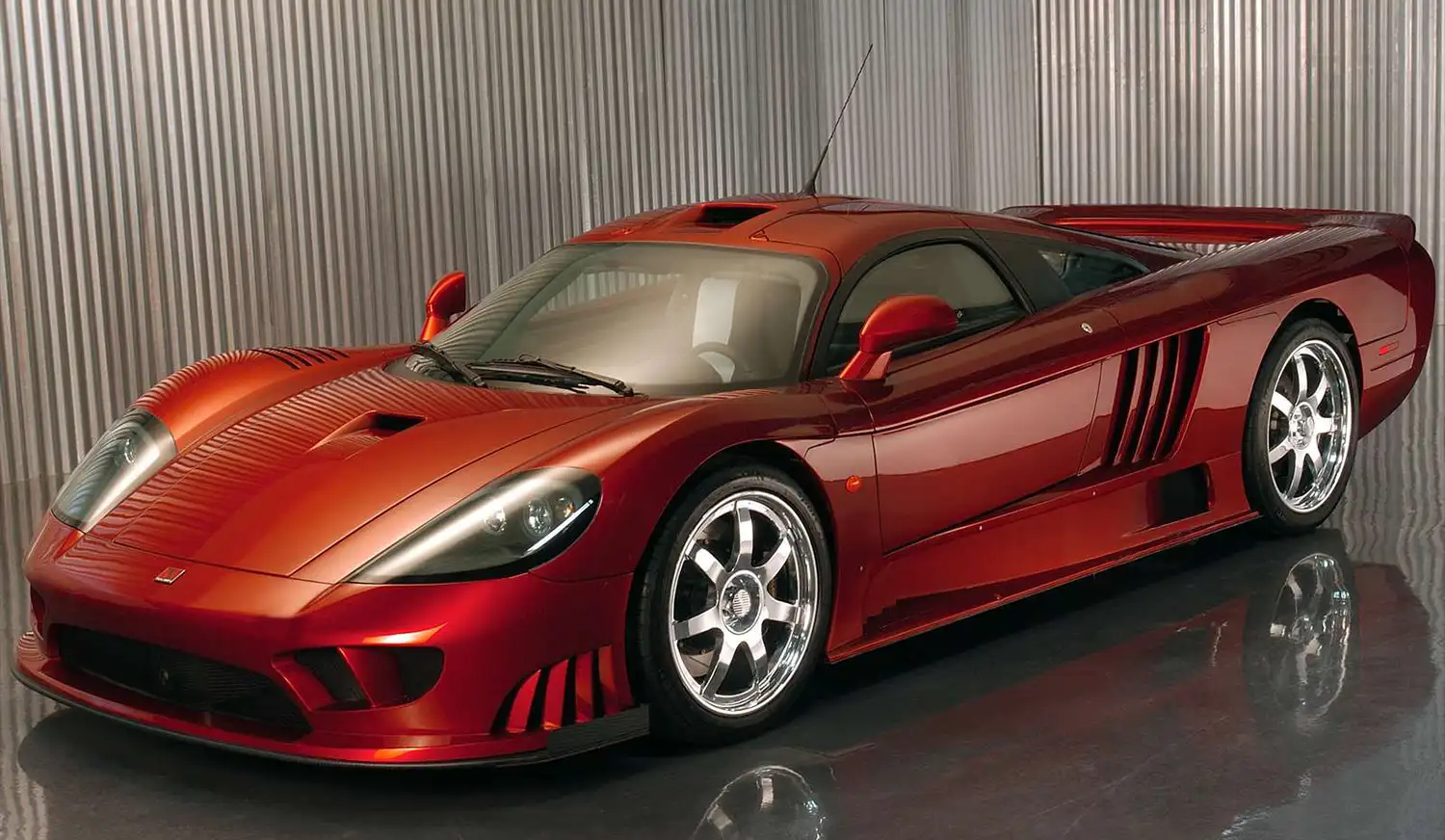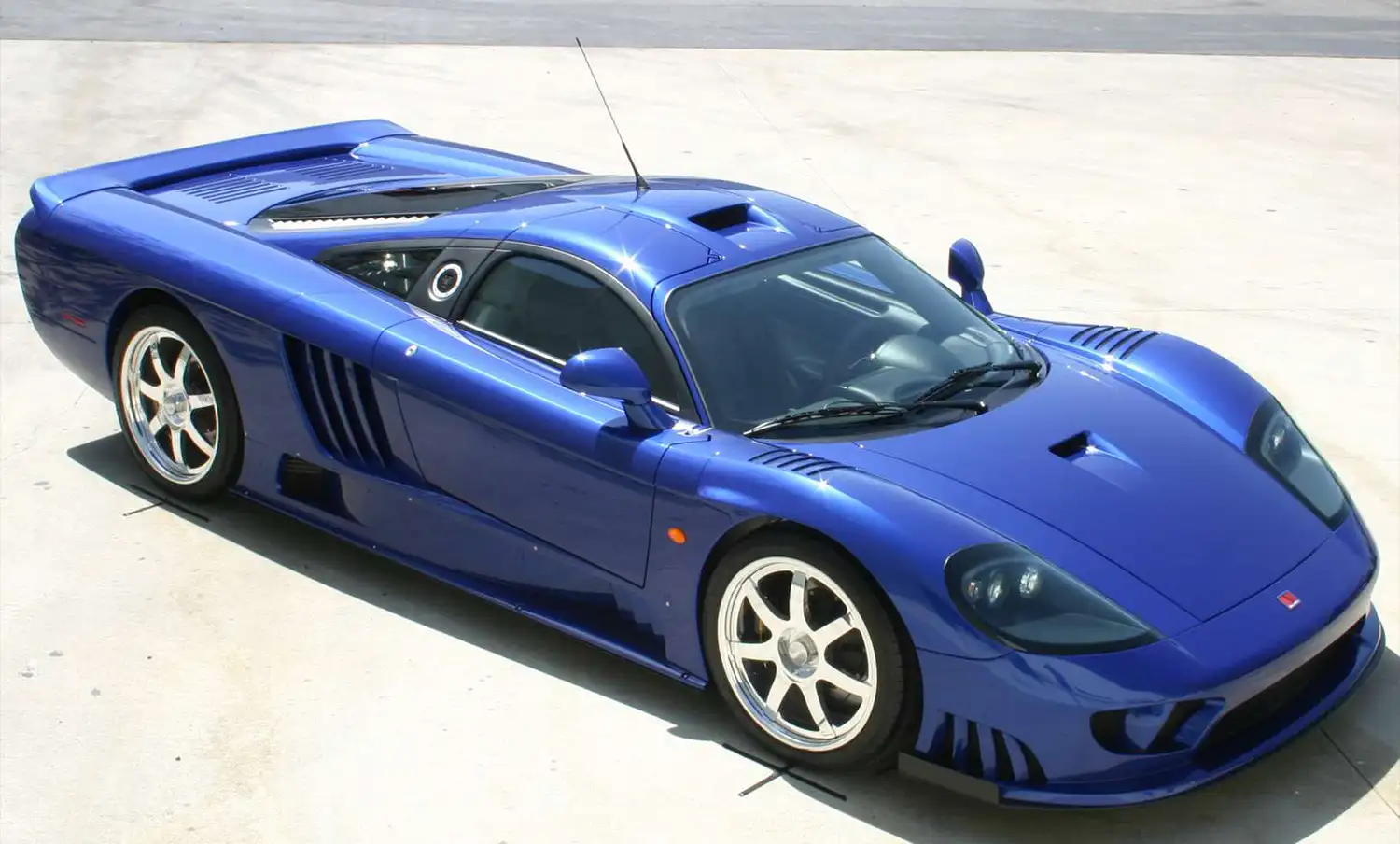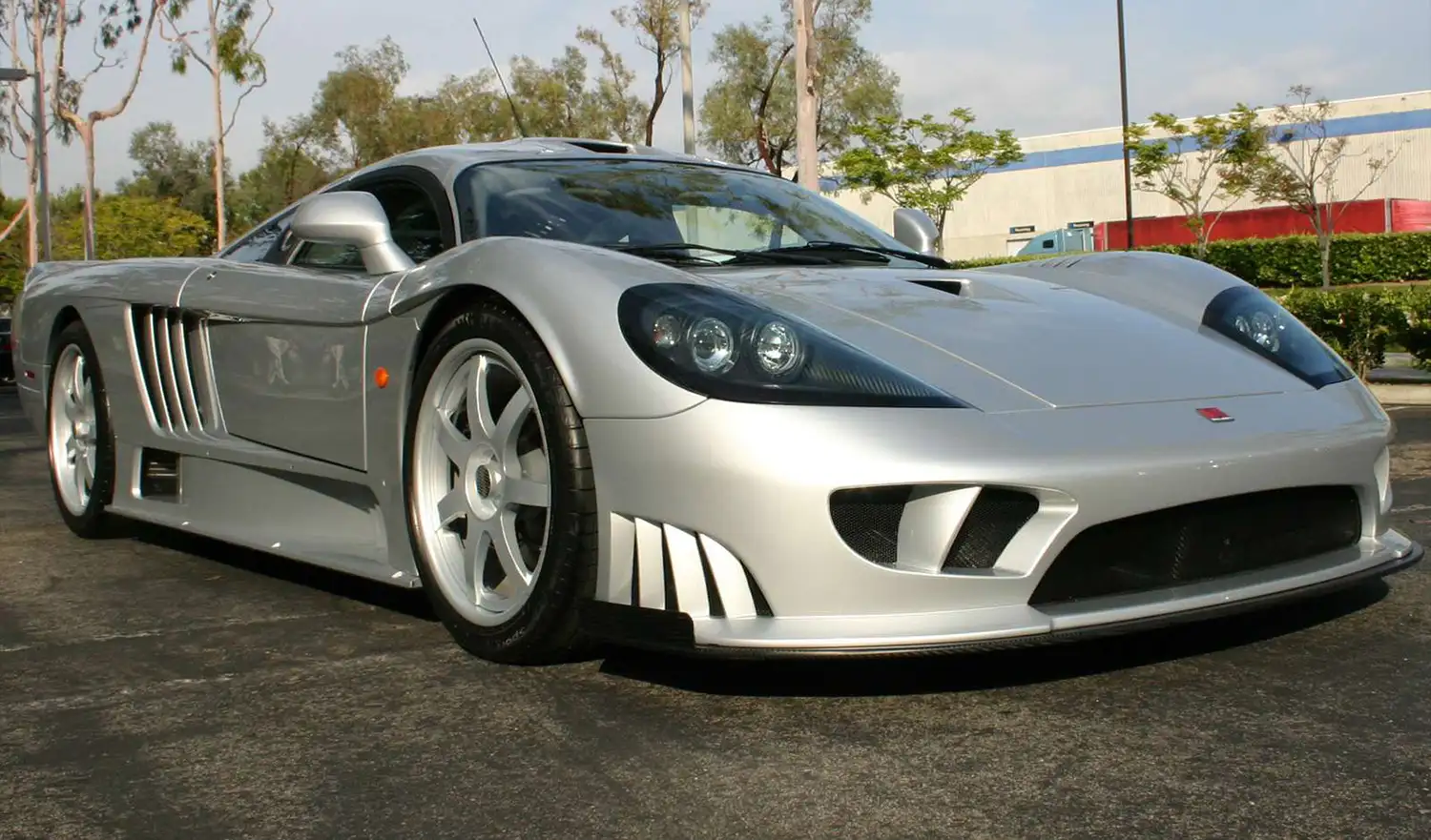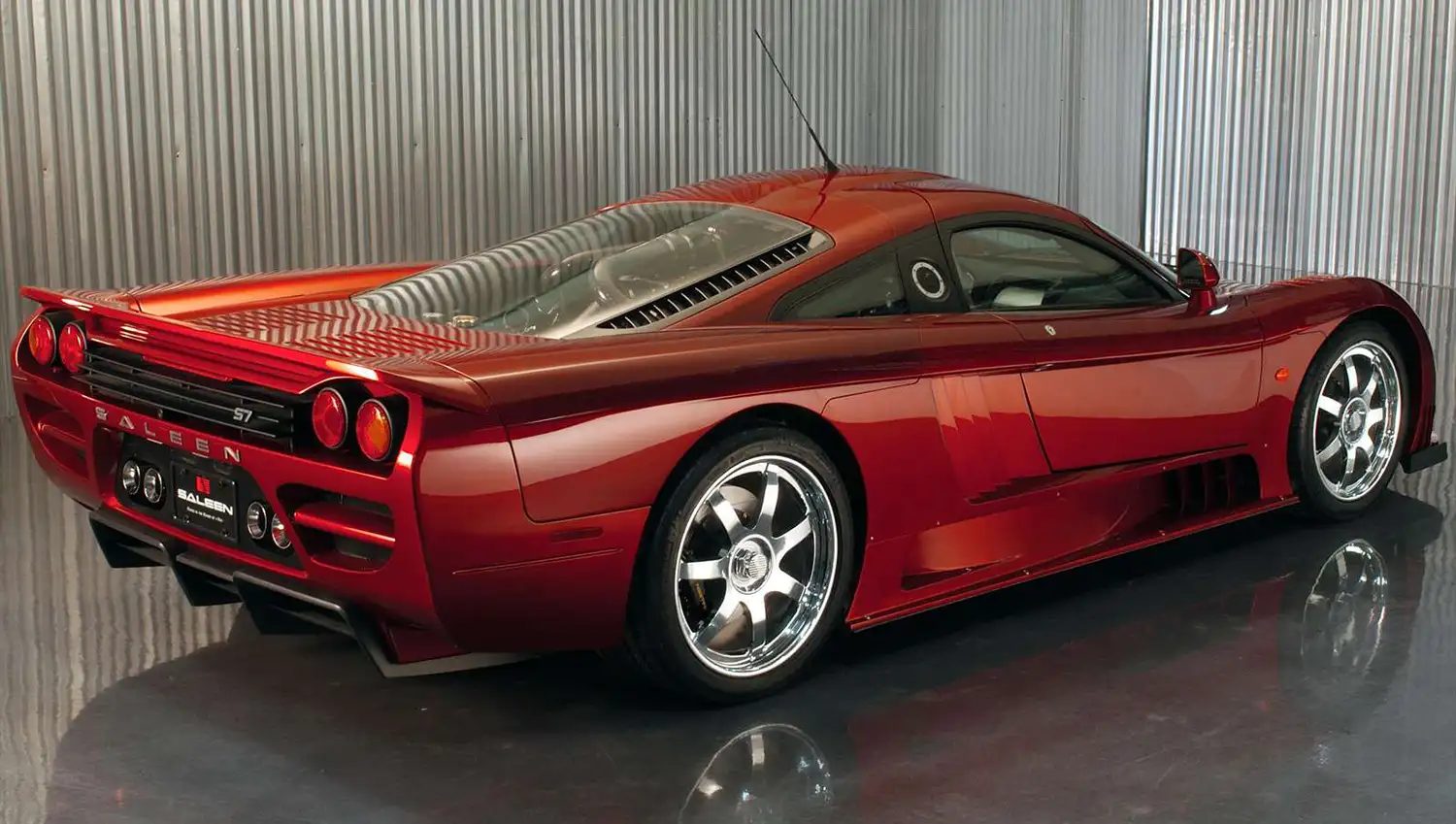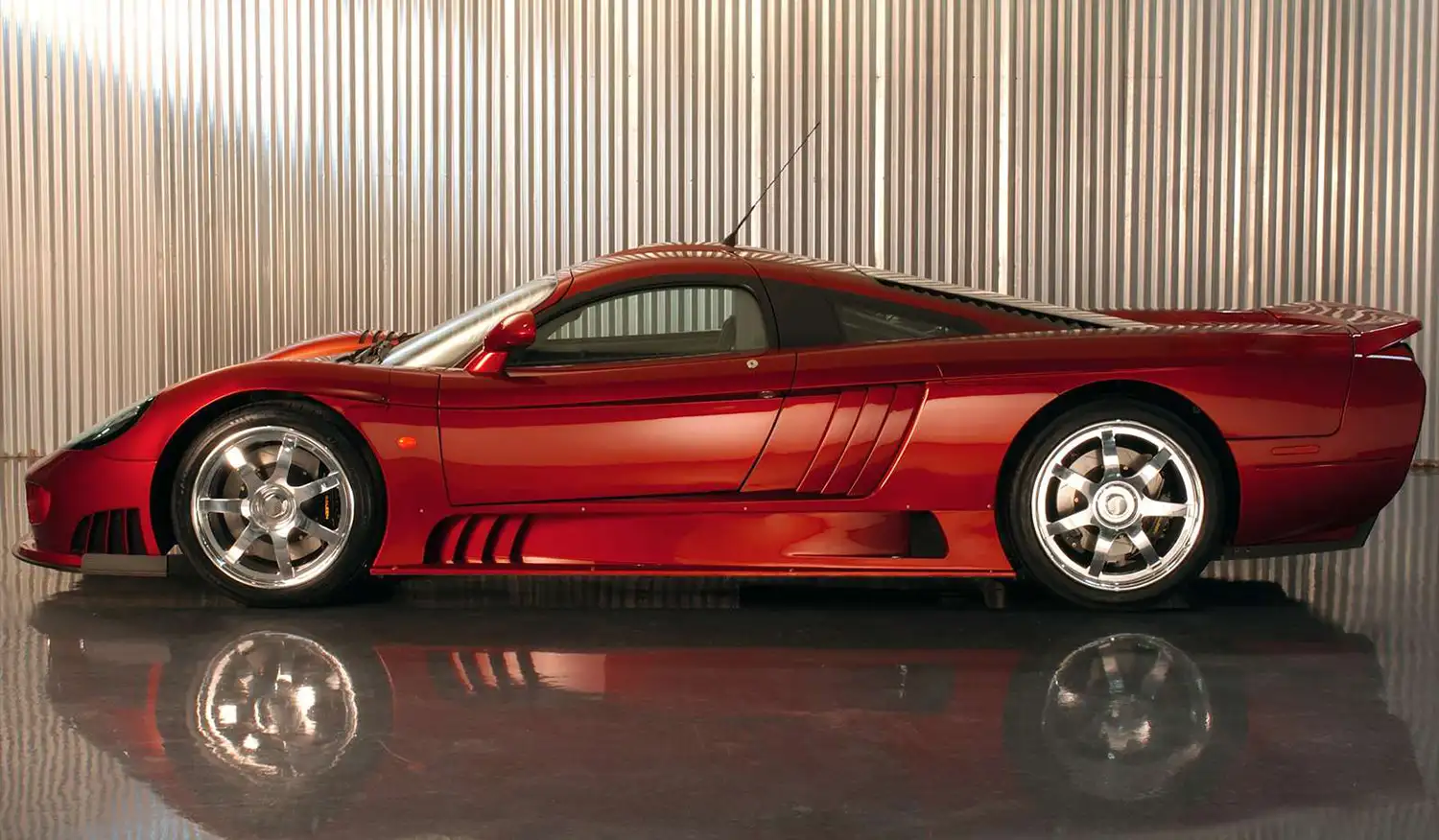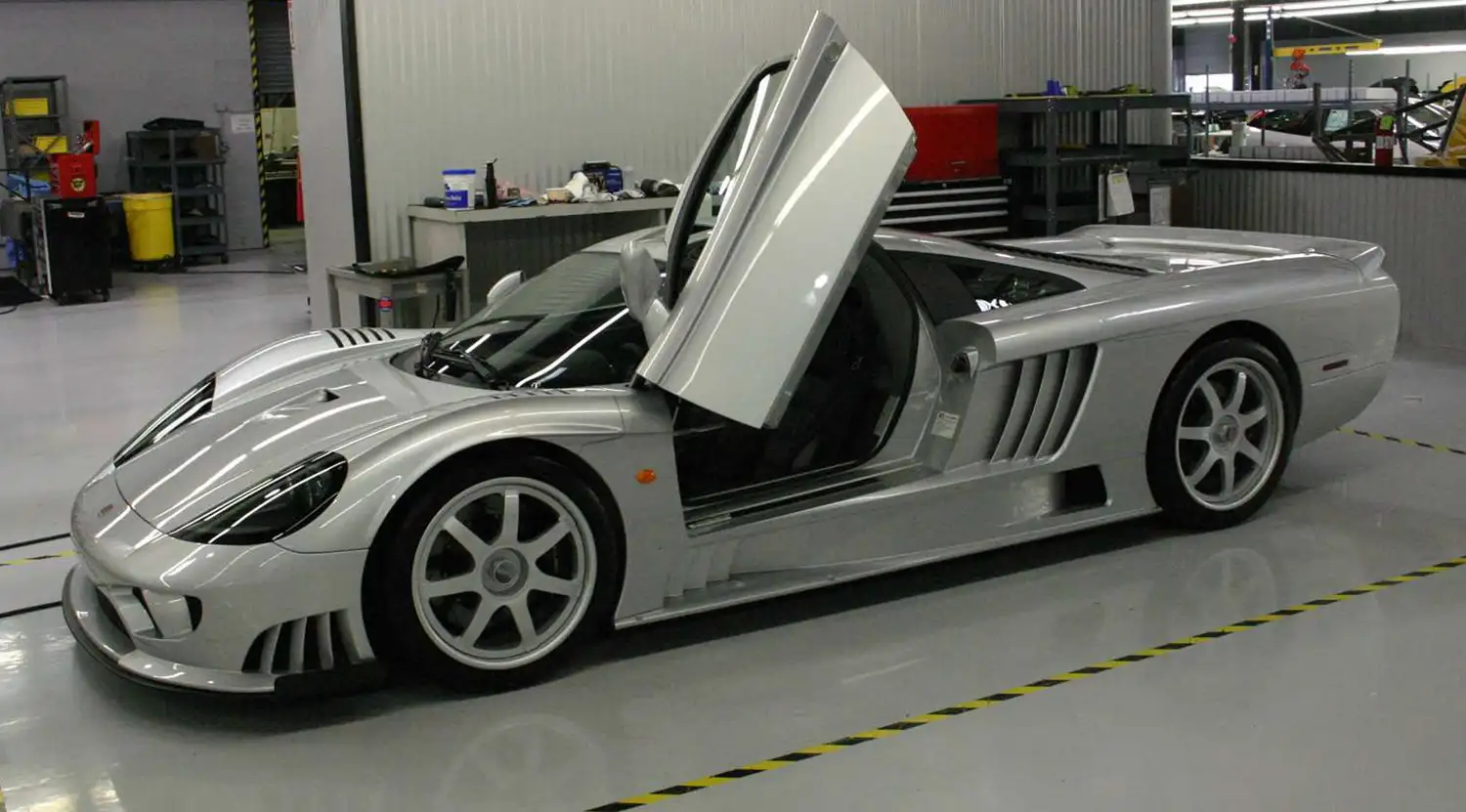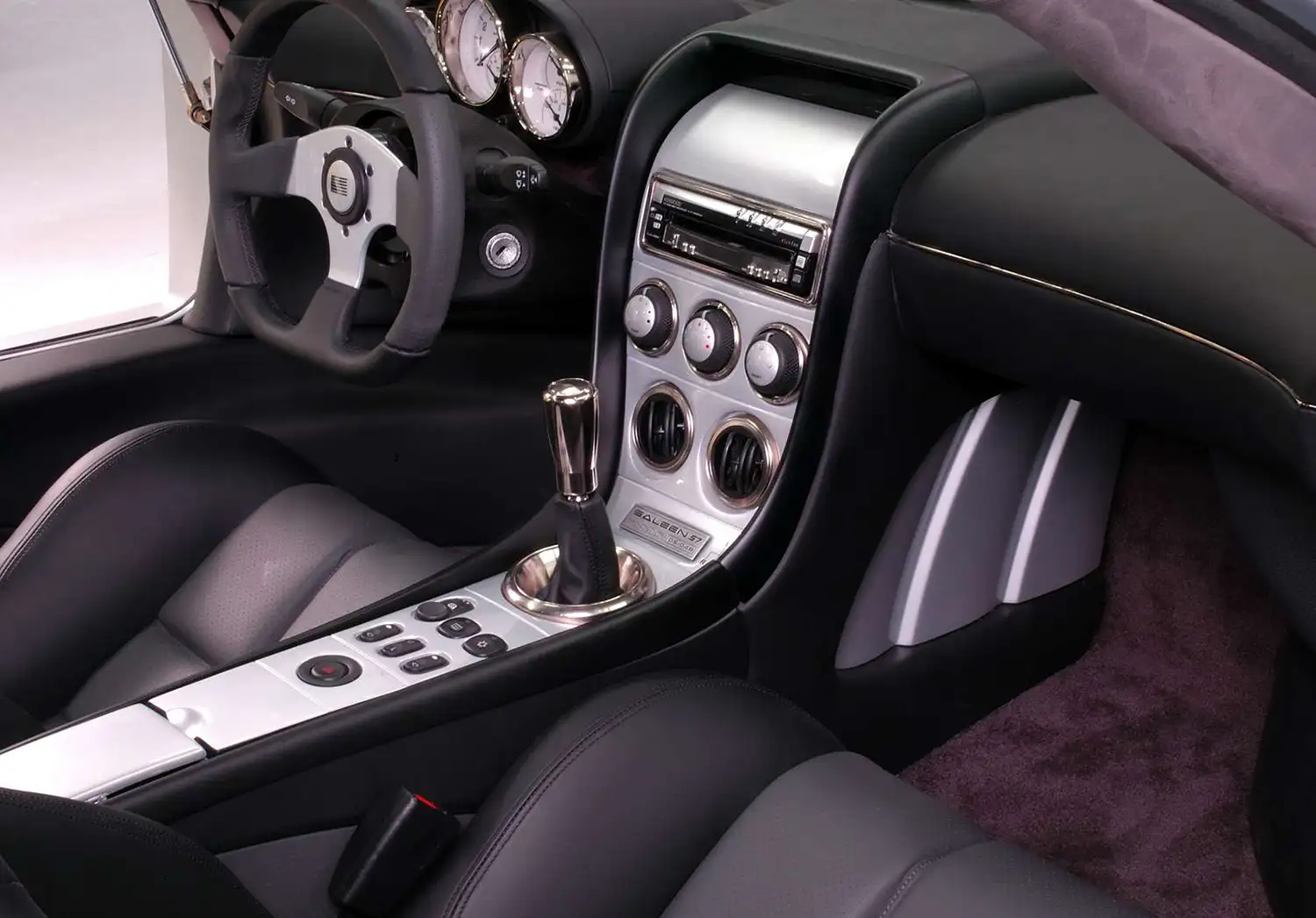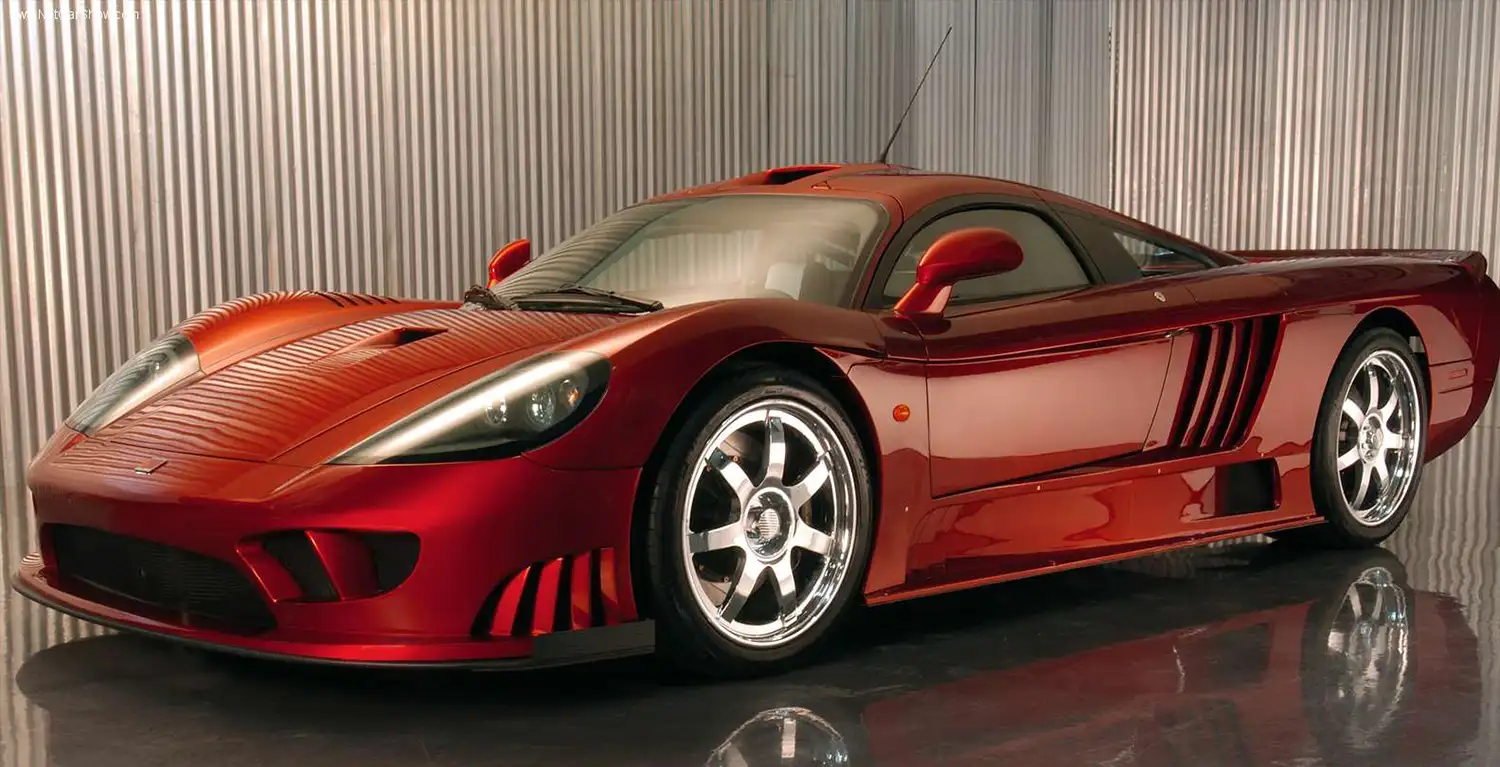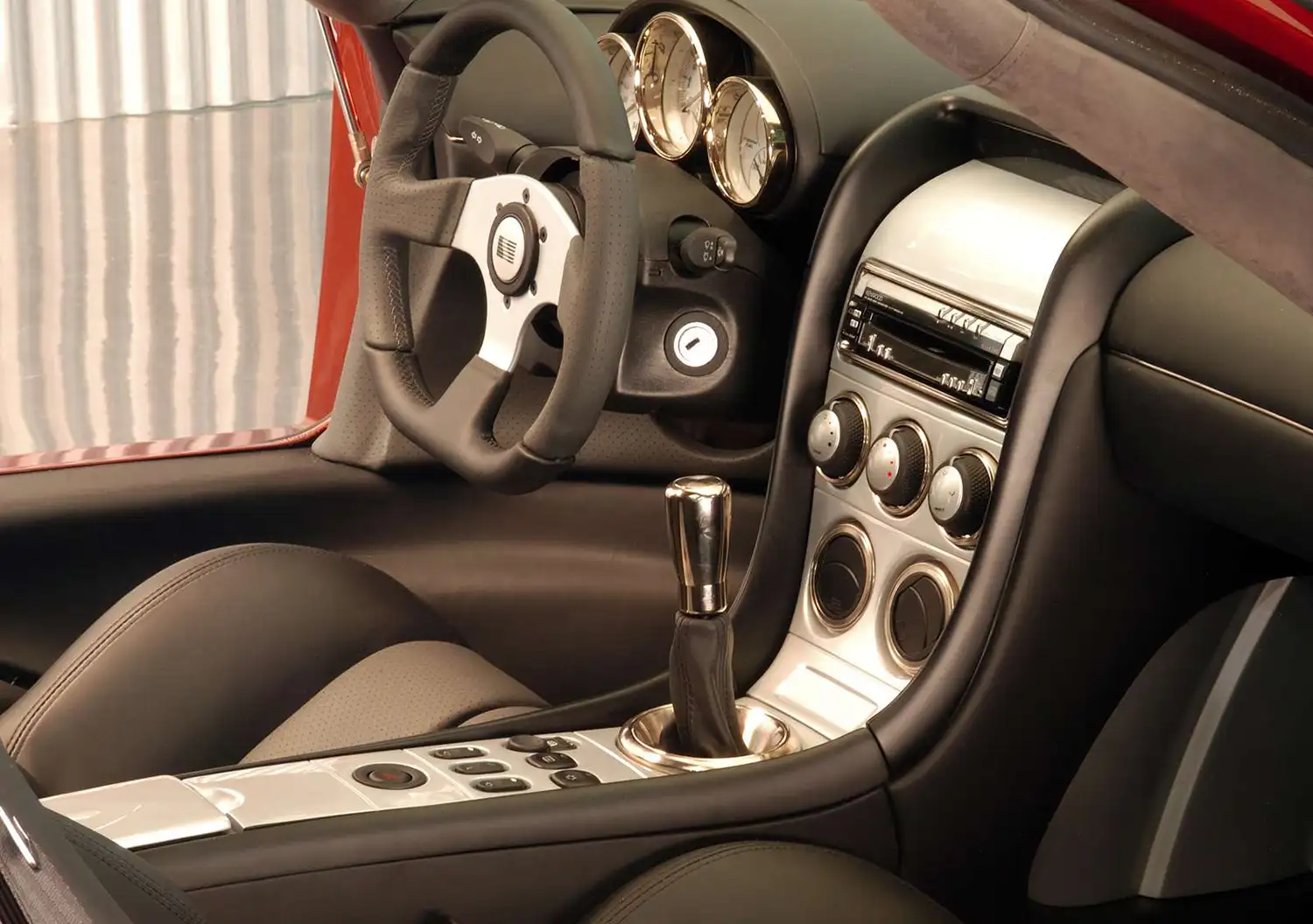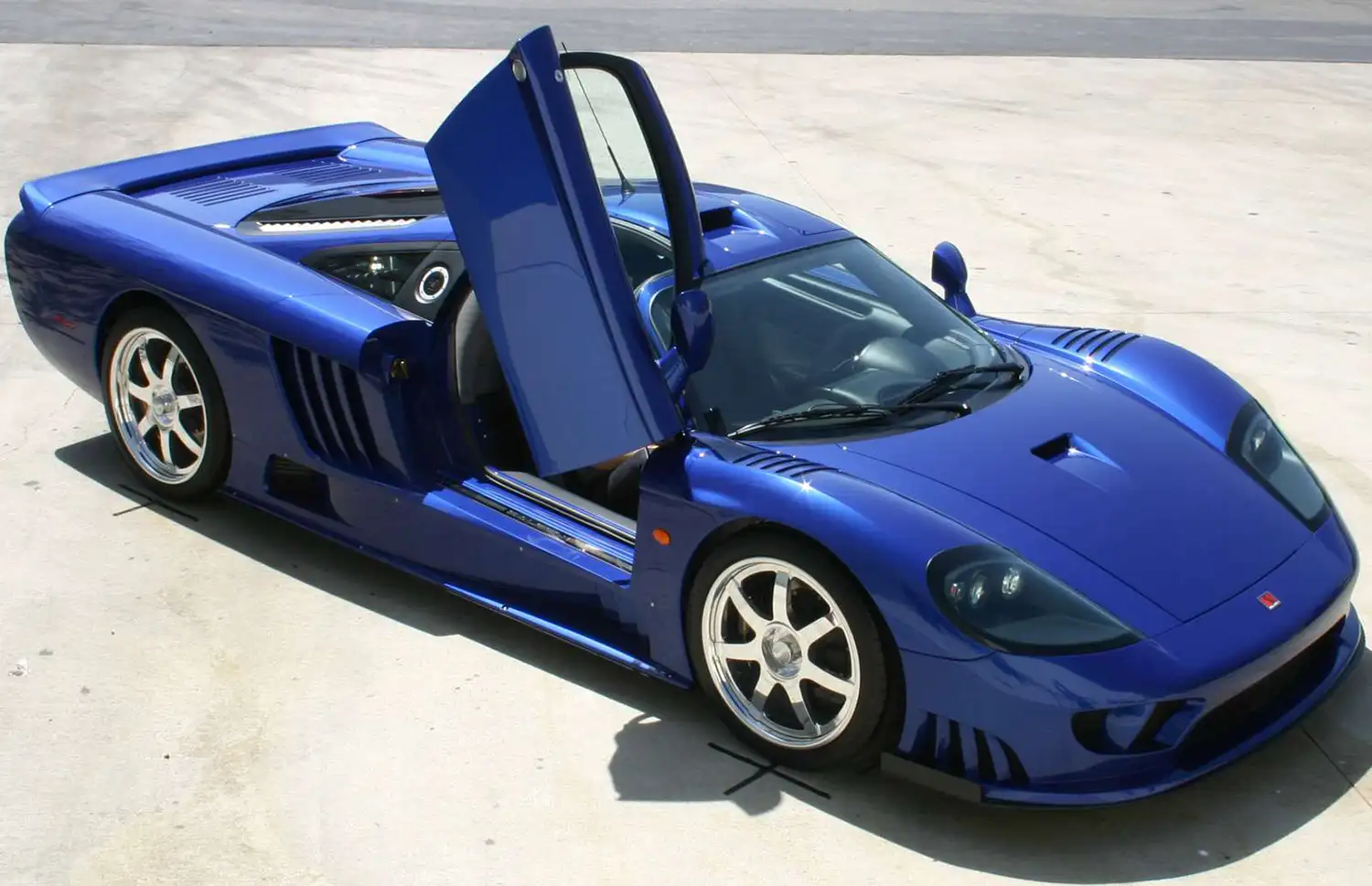
The automotive world has always been captivated by speed, power, and exclusivity, and few cars embody these traits as profoundly as the Saleen S7. Introduced in August 2000 at the Monterey Historic vintage car races, the S7 quickly established itself as America’s first true mid-engine exotic supercar. Designed from the ground up to challenge the fastest machines on the planet, it initially boasted over 500 horsepower, setting a new benchmark for street-legal performance in the U.S. While the original S7 garnered immense praise and numerous accolades for its groundbreaking speed, Saleen, a company never content to rest on its laurels, unveiled a significant evolution for the 2005 model year: the S7 Twin Turbo. This monumental upgrade addressed the rising tide of performance from European rivals, cementing the S7’s status as a formidable contender in the hypercar arena.
Power & Performance: For 2005, the Saleen S7 Twin Turbo received a dramatic boost in its already impressive performance figures. The heart of this beast remained a Saleen-designed, all-aluminum 7.0-liter V8 engine, now augmented by twin ball-bearing, water-cooled Saleen-Garrett turbos. This potent combination unleashed a staggering 750 horsepower and 700 lb-ft of torque, figures that significantly surpassed its contemporaries. To handle this immense power, internal engine modifications included a swap from hydraulic to solid lifters, allowing for higher, more aggressive revs and cam profiles. The compression ratio was lowered from 12.0:1 to 11.0:1 for durability with forced induction, and oil squirters were added to cool the piston undersides. Power was seamlessly transferred through a new-generation six-speed transaxle with a unique Saleen bell housing and an 8.0-inch, twin-plate organic/metallic clutch with hydraulic actuation, further refined with a shortened shifter stroke for improved feel.
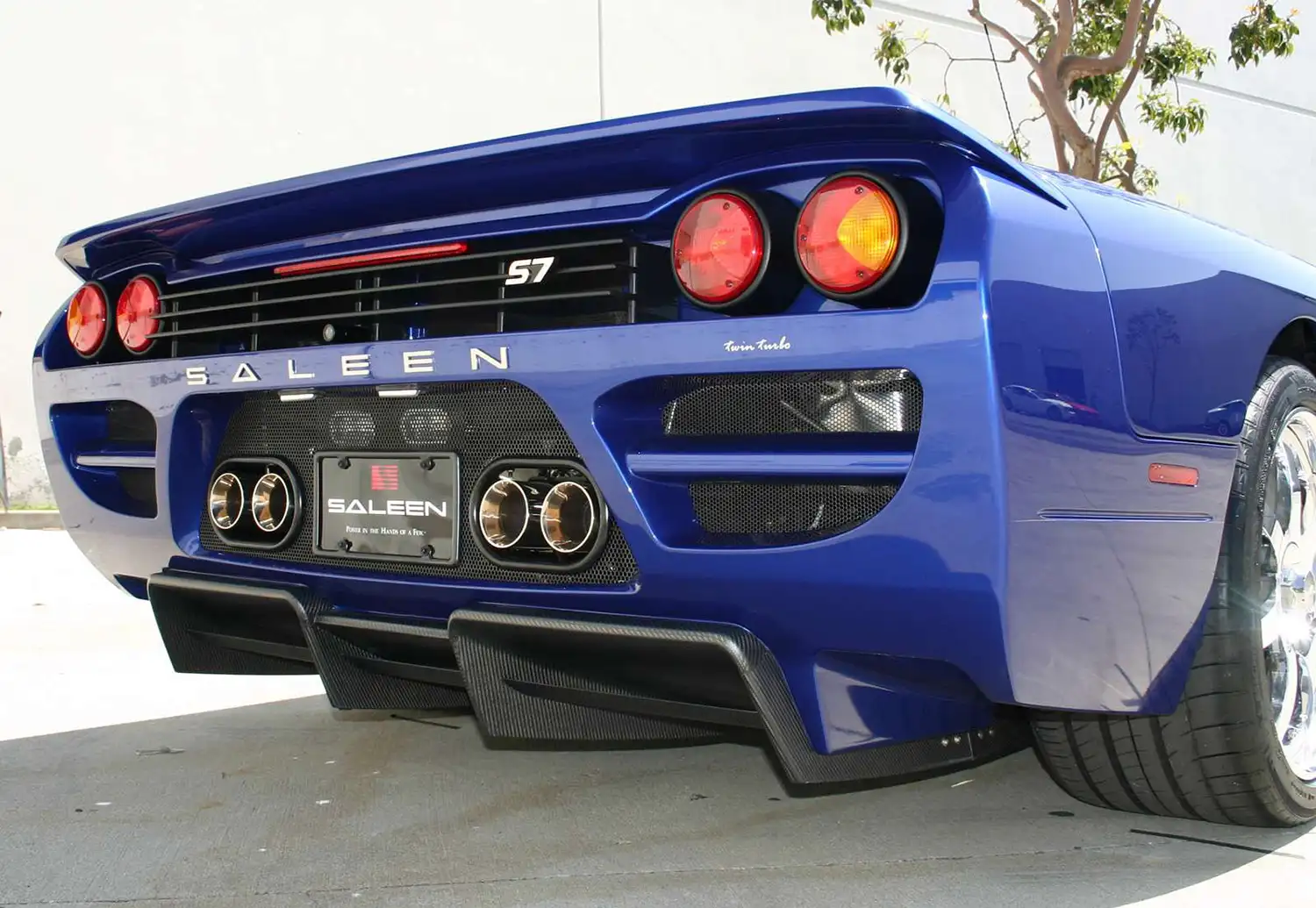
Aerodynamics & Chassis Refinements: The S7’s iconic, wind-sculpted body, initially designed for optimal aerodynamics and extreme downforce, received subtle yet significant enhancements for the Twin Turbo model. While visually similar to its predecessor, the 2005 version featured a revised diffuser/rear spoiler package and reshaped front fenders. These aerodynamic tweaks resulted in a remarkable 40 percent reduction in aero drag and a 60 percent increase in downforce, a testament to Saleen’s commitment to pushing performance boundaries without sacrificing efficiency. The chassis also underwent substantial tweaking, with virtually every suspension pickup point modified and the geometry revised for less squat and dive during acceleration and braking. A major improvement in ride comfort was achieved through dual-stage coil springs, providing a softer ride at normal speeds and engaging a stiffer rate at higher velocities when downforce became significant.
Braking & Wheels: To complement the S7 Twin Turbo’s enhanced straight-line performance, its braking system was equally impressive. Saleen-engineered Brembo-supplied lightweight aluminum six-piston mono-block calipers were fitted both front and rear, clamping down on some of the largest discs found on any production car: 15-inch vented discs up front and 14-inch vented discs at the rear. The car rode on Saleen-designed forged alloy wheels with center-locking wheel nuts, measuring 19 x 9.5 inches at the front and 20 x 12 inches at the rear. Geometry changes and the adoption of taller Michelin Pilot Sport PS2 tires (275/35R19 front, 335/30R20 rear) resulted in a substantial 30 percent increase in mechanical grip.
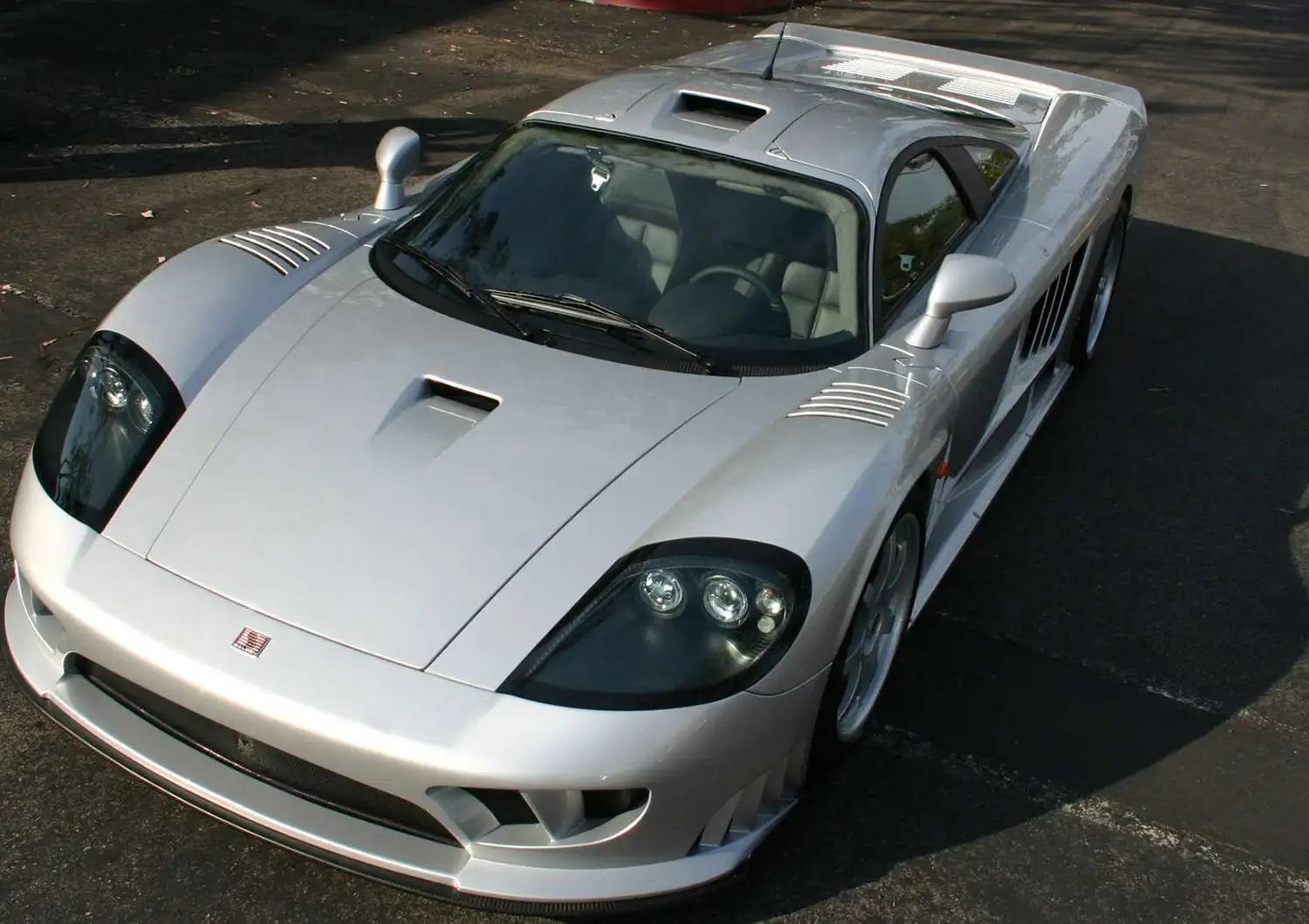
Interior and Comfort: Despite its race-bred performance, the Saleen S7 Twin Turbo also prioritized driver and passenger comfort. The interior featured asymmetrical seating, with the driver’s position slightly more centralized for improved ergonomics and weight distribution. A custom-fitted driver seating position with six adjustable pedals and a tilt and telescoping steering wheel allowed drivers up to 6 feet 6 inches to comfortably enjoy the experience. The revised pedal box offered lighter pedal efforts and increased spacing. Luxurious leather and suede covered the seats and other interior surfaces. Standard amenities included air conditioning, power windows and locks, remote keyless entry, an electric-heated front windshield, and an AM/FM/CD/DVD/TV system. A unique feature was the video “rearview mirror,” utilizing a small camera mounted at the rear.
A Dual Personality and Racing Pedigree: The Saleen S7 Twin Turbo was conceptualized with a dual personality in mind: the raw, untamed performance of a track-only racecar combined with the drivability and pleasure of a road car. This philosophy meant the S7 was as at home on a circuit as it was cruising highways. Beyond its road-going prowess, the S7 also boasts a formidable racing legacy. Its racing counterpart, the S7R, achieved unparalleled success on the international motorsports stage, securing over 50 poles, setting fastest race laps more than 50 times, and winning well over 40 races, including seven GT Championships. Notable victories include the prestigious 12 Hours of Sebring and a track record at the famed 24 Hours of Le Mans. One of its most memorable triumphs came at Imola, Italy, in the 2004 FIA GT Championship, where S7Rs dominated qualifying and secured victory over the much-anticipated Maserati MC12s on their home turf.
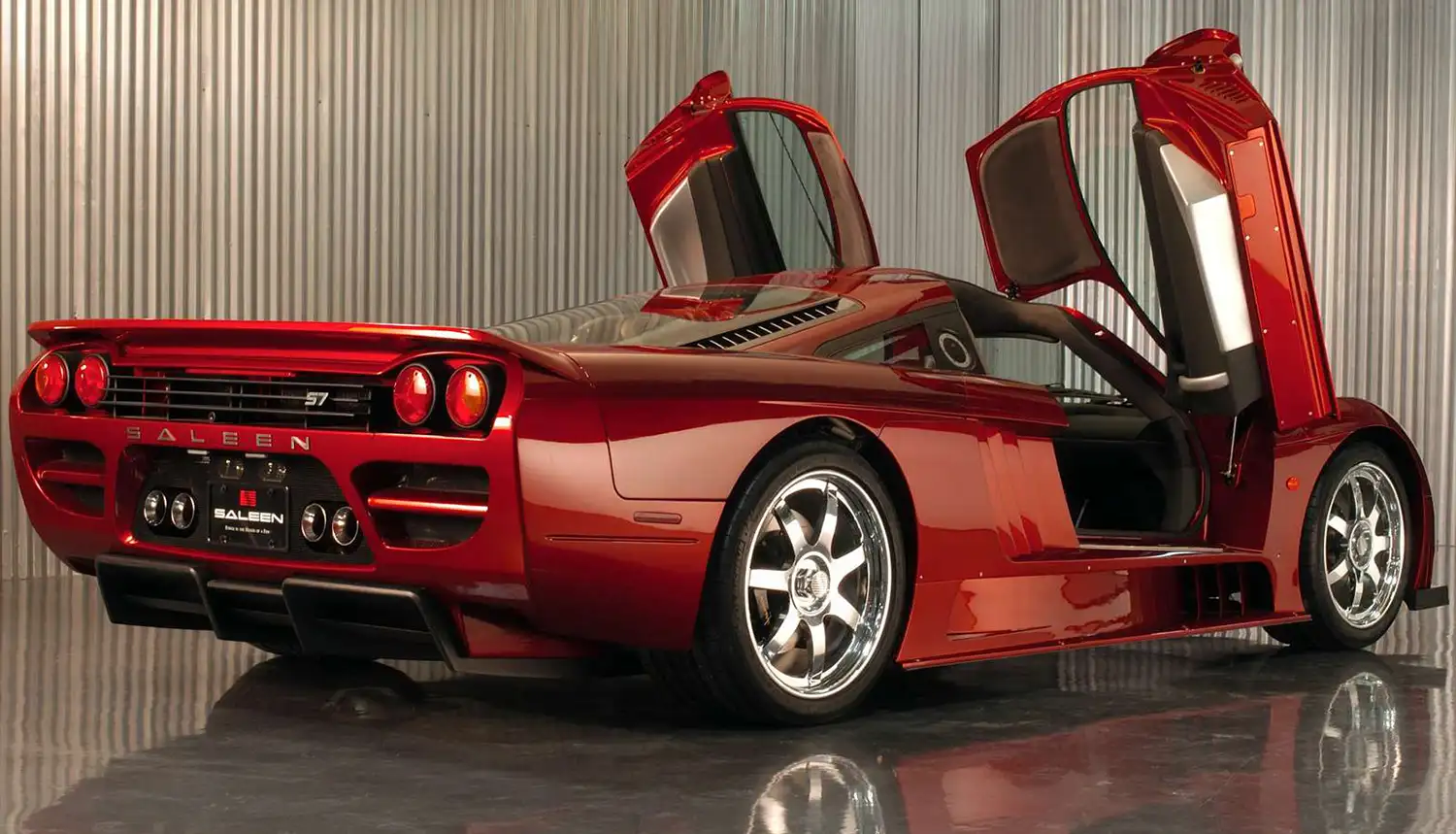
Global Design Philosophy and Unmatched Value: While an American supercar at its core, the S7 exemplified a “best-in-practice” design philosophy, incorporating superior components from around the globe. This included Saleen-engineered/Brembo-supplied brakes from Italy and high-technology pieces from the UK’s motorsports hub. Initial wind tunnel testing was even conducted at the University of Glasgow in Scotland, showcasing a truly international collaborative effort. Perhaps one of the most compelling aspects of the S7 Twin Turbo was its value proposition. With an MSRP of $555,000, it significantly undercut its major supercar competitors like the Ferrari Enzo and McLaren F1, all while boasting superior horsepower and torque figures.
Summary:
- America’s first mid-engine exotic supercar, the Saleen S7, evolved into the S7 Twin Turbo for 2005.
- The 2005 model featured a 7.0-liter Twin-Turbo V8 engine producing 750 horsepower and 700 lb-ft of torque.
- Aerodynamic enhancements led to a 40% reduction in drag and 60% increase in downforce.
- Advanced chassis and braking systems ensured exceptional handling and stopping power.
- The interior blended race-car ergonomics with luxurious amenities.
- The S7 Twin Turbo offered a unique blend of track performance and road drivability.
- Its racing variant, the S7R, achieved significant international motorsports success.
- The car represented exceptional performance and value compared to its hypercar rivals.
Disclaimer: Automotive performance statistics can vary based on testing conditions and vehicle specifics. Always refer to official manufacturer data for precise figures.
Source: Saleen
AI Assistance: Gemini
